×


We have detected your country as:
Please click here to go to the USA website or select another country from the dropdown list.
by: Charleeda Sprinkle, Assistant Editor
Oh, that we loved the Word of God more! The psalmist writes with passion: “The law of Your mouth is better to me than thousands of coins of gold and silver…Oh, how I love Your law! It is my meditation all the day” (Ps. 119: 72, 97). Unfortunately, the Church comes up short, according to several polls done concerning daily Bible reading. One poll found that those who read the Bible daily only read it less than eight minutes a day!
Not long after I read these discouraging polls, I was sent a Jerusalem Post article titled “Studying the Bible with Bibi” (Prime Minister Benjamin Netanyahu) that delighted me. Just prior to Shavuot (Pentecost), Netanyahu made time to meet with 16 rabbis, academics, Bible scholars, archaeologists, and linguists for a Bible study on the book of Ruth, which is traditionally read on that holiday.
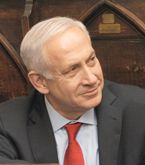
Prime Minister Benjamin Netanyahu Photo by Isranet
Netanyahu was following in the footsteps of two previous prime ministers who hosted regular Bible studies: David Ben-Gurion and Menachem Begin. How blessed Israel is at this time to have a prime minister who would say the following: “The Bible is the foundation of our existence. It unites the Jewish people, as it has throughout generations. It also serves not only as a foundation but also as a map and compass. The Bible is always relevant vis-a-vis today’s problems and challenges. It inspires; it is a source of life for our people, and I think that it is important to expand Bible study and love of the Bible among all parts of the nation.” How we need to follow Bibi’s lead and make what’s important our priority!
For Jewish people, Torah can refer to just the first five books of the Bible (Gen.–Deut.) or all of the Hebrew Bible (the Old Testament). The word torah is usually translated “law,” which is unfortunate because it gives the impression that God’s Word, or a good portion of it, is nothing more than a set of rules and regulations. A more accurate translation, according to the Hebrew, would be direction or instruction.
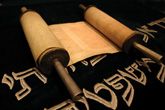
Lilly Rosen-Zohar/Shutterstock.com
Gesenius’s Lexicon defines torah instruction “as that of parents.” Jeff Benner, founder of the Ancient Hebrew Research Center, explains: “When a parent is teaching a child a new task and he demonstrates a willingness to learn but fails to grasp the teaching completely, the parent does not punish the child but rather encourages and builds on the teaching. In contrast to this, a law is a set of rules that if not observed correctly will result in punishment, and there is no room for teaching. The torah of God are his teachings to his children which are given in love to encourage and strengthen.”
The root word for the noun, torah, is the verb form, yarah, which means “to point out” or “show.” Thus, God’s torah points the way to life and keeps us from ways that would destroy our souls (Ps. 119:50, 93). For Christians, the New Testament is also God’s “instruction” that “points the way.” It’s in this sense that I’ve chosen the title of this teaching letter. However, 59% of our Bible is the Hebrew Scriptures, which we wouldn’t have today if it weren’t for the Jewish people.

Photo by Isranet
How thankful we should be to the Jewish people for preserving the integrity of the Bible since the days of Moses. The world didn’t understand how meticulously this was done until the Dead Sea Scrolls were discovered in 1947 and 1956. Before this, the oldest copies dated to around AD 915. The Dead Sea Scrolls were almost 1,000 years older. Amazingly, they found very little difference between them and today’s Hebrew Bible. This is due to the strict guidelines used by the Torah scribes, described in part on The Virtual Bible Museum Web site:
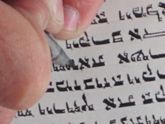
Photo by Eddelene Marais
Even though most scribes had the Scriptures memorized, they were not allowed to write a single word from memory. They must use the “tikkun,” or perfect text that was passed down from the generations before. Every word had to be checked against the older copy before and after it was written. Once the page of parchment was complete, the letters, words, and paragraphs had to be counted and be identical to the original document. Each letter had to be clear and legible, and no two letters could touch each other. If just one error occurred, the page had to be re-done.
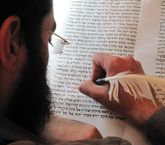
Photo by Eddelene Marais
Once a sheet of parchment was complete, it had to be checked by three rabbis before being sown with other parchment sheets into a complete Torah scroll. A complete torah scroll consists of about 250 parchment sheets and, if completely unrolled, can be up to 100 yards [91 meters] long! Even after the entire scroll was complete, however, it was reviewed again within thirty days. If one or two pages had errors, those errors could be corrected, and the scroll used, but if three or more parchment pages were found to contain errors, the entire scroll was unfit for use and had to be re-done!
An old and worn scroll was discontinued from use because of the possibility of someone using it to make a copy, and thereby making a mistake because of faded or smudged letters.
Scribes were taught how to write each letter so that every copy was uniform and not in a scribe’s own handwriting, lest it be misread by later copyists. This scrupulous method of copying Scripture alone should heighten our appreciation and reverence for the first 39 books of our Bible. However, Christians have also paid a price for the sake of God’s Word: the first translators of the Bible into English who were killed for doing so, many modern-day translators who have spent their lives living among foreign peoples in order to give them the Bible in their own language, and those who have smuggled Bibles into restricted areas.
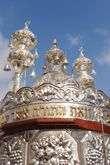
www.israelimages.com
The Torah was not only copied with great diligence but with great reverence. Again from the same Web site:
A scribe had to speak and sing aloud each word as he wrote it. They washed their hands before each writing session, not just to make them clean, but rather to prepare the heart and mind for performing the holy act of writing the Word of God. They also prayed before each session…Before writing “Jehovah,” the name of God, the scribe had to clean the pen and wash their entire bodies in a “mikveh,” a pool of natural running water.
Even though we have printing presses today, Torah scrolls are still copied by scribes, following some of the same rules from ancient times. It takes at least a year for a scribe to copy the five books and can cost $10,000 or more, so a Torah scroll is a synagogue’s most precious possession.

www.israelimages.com
The word torah is feminine, so the Torah is treated like a bride. Several times, I have witnessed the joyful procession made by a synagogue’s rabbi and congregants through my neighborhood after they have either purchased a new scroll or been given one. A truck, heavily decorated in lights with a huge lit-up crown on top leads the way very slowly with joyful music, amplified to draw people out to the street. The Torah follows, carried under a canopy and accompanied by men dancing.
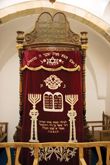
www.israelimages.com
Every scroll is protected in a fine mantle, often of silk or velvet, or an ornate, silver-gold case. Hung over the mantle is a silver breastplate and on top is a silver crown; the scroll handles are topped in sterling silver ornaments with tinkling bells, reminiscent of the high priest’s clothing (Exod. 39:8–26). When a scroll is taken out of the ark (closet), the congregation stands in reverence. It is then lovingly cradled in a man’s arms and carried around the synagogue, giving congregants an opportunity to kiss it. They are not worshipping the Torah, but acknowledging its holiness and their love for it.
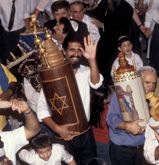
www.israelimages.com
At the end of the Jewish calendar year, when the Jewish world has completed the reading of Genesis to Deuteronomy, men dance with the scrolls inside the synagogue and on the streets. In Jerusalem, a public celebration allows Christians and Jews alike to dance with great joy over the Torah, which reminds us of how David danced when he brought the Ark of the Covenant to Jerusalem.
God’s Word is honored, not just in synagogue services and on special holidays, but throughout the day. They kiss the Torah as they enter and leave a room or building by touching a mezuzah, a small box containing Scripture that’s affixed to a doorway (Deut. 6:9). Men “wear” the Word of God when they don the prayer shawl (tallit) and tefillin (the Scripture boxes worn on the forehead and arm) for morning prayers (Deut. 6:8, 22:12). The tassels and knots of the tallit—sometimes referred to as the Bible on cloth—are symbolic of the 613 laws found in Torah.
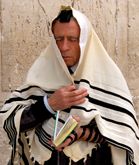
www.israelimages.com/Hanan Isachar
For the Orthodox Jew, to engage in morning prayer without tefillin is considered a mark of disrespect. Just as a soldier would not appear before his commanding officer out of uniform, no subject should appear before the King of the Universe improperly attired. Thus, Orthodox men bathe and dress before donning tefillin. The beautiful part is the Scripture they quote as they wrap the strap around the hand and fingers in the shape of a shin, the Hebrew letter that stands for El Shaddai (Almighty): “I will betroth you to Me forever; yes, I will betroth you to Me in righteousness and justice, in lovingkindness and mercy; I will betroth you to Me in faithfulness, and you shall know the LORD” (Hosea 2:19–20). Can you imagine reciting that to the Lord every morning?!
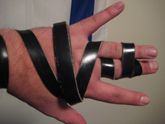
www.wikiedia.org/yonkeltron
All these acts reminds them of who they are, a people in covenant with God, and that they are to walk according to God’s instruction everywhere they go, with everyone they meet. Christians have much to learn from our Jewish friends concerning reverence for God’s Word.
Love and reverence for the Bible is what motivates us to read the Bible, but if the polls among Christians are right—that so few read so little of the Bible—how many study it? Again, Jewish people are an example for us.
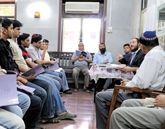
www.israelimages.com/Helgor Cohen
Of the Jewish people, the Orthodox are especially avid students of the Torah, who often spend their entire lives in study. However, all men—not just those who study to be rabbis—are welcome to study in a yeshiva (house of study), as well as women in some places. As Christians, we might think that Jewish study is just about “the letter of the law,” but according to one Jewish Torah teacher, that is not so: “The study of Torah must be done in the right spirit…it is essential that we grasp the Spirit of the Torah, not simply the letter. For the letter of the law produces dry, meaningless observance, but when the spirit is grasped then we grow into loving and joyful observance of God’s laws, which is the only acceptable way to live the Torah.”
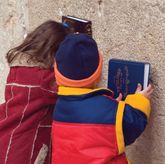
Mikhail Levit/Shutterstock.com
One of the prayers recited every morning is, “May it be your will…our God…that you accustom us to [study] Your Torah and attach us to Your commandments.” What a lovely request—to be “attached to” God’s Word! Dr. John Garr, founder and executive director of Restoration Foundation, writes that to the Jew, study is “the highest form of worship…This is not study to understand; it is study in order to do.” And that is what study is all about: life application. If we don’t study, we won’t know how to live, and if we don’t know how to study it properly, we’ll come up with the wrong answers.
Most Christians who don’t read the Bible regularly say they don’t read it because it’s too hard to understand, which is understandable. How many 2,000- to 3,000-year-old books have you read recently? The fact that we can read it in our own language is amazing. For most of Christendom (before the 15th century) that was not so. Such an ancient book requires a different approach from any other book we read. We need special tools and guidelines to know how to interpret it correctly. Today, those tools are available, many of them online, making it easy for the “unscholarly” sort. Let’s look at some Scriptures that should encourage that endeavor.
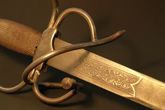
prill/iStockphoto.com
What the Word is…Hebrews 4:12: “For the word of God is living and powerful, and sharper than any two-edged sword, piercing even to the division of soul and spirit, and of joints and marrow, and is a discerner of the thoughts and intents of the heart.” No other book is “living.” No other book can pierce into the core (marrow) of man and detect a man’s self-thoughts, motives, and emotions. No other book can discern where doubt and unbelief lurk.
This is not just a book, but a sword. A sword in the wrong hands can kill. Charles Spurgeon conjectures that David favored the sword that he used to behead Goliath because it had the stain of Goliath’s blood on it. Our “sword” has the stain of Another’s blood on it, so we need to possess a great respect for it and be very careful how we wield it.
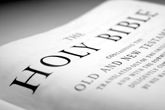
macho/iStockphoto.com
What the Word does…2 Timothy 3:16–17: “All Scripture is given by inspiration of God, and is profitable for doctrine, for reproof, for correction, for instruction in righteousness, that the man of God may be complete, thoroughly equipped for every good work.” We need to remember that when this was written in the first century, “Scripture” was what we refer to today as the Hebrew Scriptures (Gen.–Mal.). So Paul is saying that everything in the Old Testament (the 59% of the Bible that so many Christians read so little of) makes us capable and proficient for anything God asks us to do!
Note what we miss when we don’t take advantage of the Bible’s teaching: doctrine (teaching on the foundational truths of Scripture), reproof (that which convinces us of error), correction (that which straightens or restores), and instruction in righteousness (which refers to more than just teaching but repetitive training in order to change behavior). Remember, all this is found in the Old Testament! However, in AD 397, the New Testament books were officially acknowledged by the Church as God’s Word as well. (In 2 Peter 3:15–16, Peter equates Paul’s letters to the Old Testament Scriptures.) So, if we add the New Testament to this, we can surely be a power-packed tool in God’s hands.
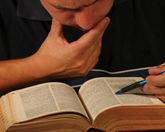
Wessel du Plooy/Shutterstock.com
What our responsibility is….2 Timothy 2:15: “Be diligent to present yourself approved to God, a worker who does not need to be ashamed, rightly dividing the word of truth.” Other translations use these words: study, work hard, do your best, strive diligently. The Greek word means to be zealous, persistent, intense, earnest, or dedicated in our study of the Bible. This is also implied by the word “worker.” Study can be work; it takes diligence to understand, not just a casual reading done eight minutes a day.
“Rightly dividing” is a tentmaker’s term. As a tentmaker, Paul was referring to the need to cut the material straight so all the pieces would fit together properly. If we don’t interpret the Word correctly, it won’t look like the truth God intended it to be. We have to handle it accurately rather than twisting it or taking it out of context to say what we want it to say. Wrong interpretation creates cults and false religions. People are led astray thinking they are following the truth, when all they are following is a man’s wrong teaching.
Let me close with some general guidelines for those who are not accustomed to Bible study.
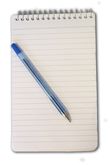
www.freeimages.com
1. Have a Bible study plan.You are much more likely to read or study the Bible if you have a plan. Various plans abound on the Internet; some can even be emailed to you daily. Reading through the Bible from Genesis to Revelation—which can be done in chronological order—is a good way to begin in order to get familiar with the whole story of the Bible, so bypass topical studies at first.
Though many plans are based on the goal of reading through the Bible in a year, it may be too much for beginners. When you miss a day or two, you get too far behind to catch up and quit; instead, read it at your own pace. It’s not about how much you read but what you get from it.You may read several chapters one day and just one or two verses the next. When the Holy Spirit speaks, stop and listen and take time to meditate on it or search it out more thoroughly.
2. Purchase a study Bible. A good study Bible will include a concordance, maps, illustrations, charts, cross references, book introductions, and commentary. Go to a Bible book store and compare Bibles because they differ greatly. Generally speaking, the Old and New King James versions are the closest to the originals. The Living Bible, Good News, and The Message are not translations but paraphrases—good for easy reading but not for serious study.

www.freeimages.com
3. Know the general guidelines for proper interpretation. Because the Bible is an ancient book, we have to understand what it is saying in the time it was written. We have to understand the language, culture, history, and geography of Bible times and not read with a 21st-century mindset. The Bridges for Peace “Hebraic Roots 101” series in our Dispatch from Jerusalem gives an introductory teaching on this (find the collection online in the Dispatch archives under Hebraic Roots 101). Google “How to Study the Bible,” and you’ll find many sites.
David Pawson is an excellent teacher from the UK who has taught in Jerusalem during the Feast of Tabernacles. His “How to Study the Bible” class on video can be found at davidpawson.org. His book, Unlocking the Bible, is an excellent guide for reading through the Bible; it’s not a commentary but provides thorough overviews of each book of the Bible.
4. Collect the tools needed. There are numerous Bible teachers and commentators available, but what I want to encourage is studying the Bible yourself. There’s nothing more exciting than discovering a “hidden” truth after digging deeper into the text. Just like a carpenter has a belt of tools strapped to his waist, so we need the same. Get familiar with the tools: word lexicons, interlinear Bible, topical Bibles, atlases, etc. Almost all of them are online or on software, so you don’t have to purchase an expensive library. My personal favorite online site that gives you access to most of these tools is http://www.blueletterbible.org
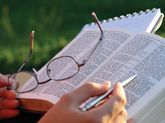
Sorin Popa/Shutterstock.com
5. Let the Bible say what it says. Set aside your own theology and opinions and be willing to change them. Don’t approach the Bible trying to find proof for yourbeliefs.
6. Depend on the Holy Spirit to be your teacher. “But the Helper; the Holy Spirit…He will teach you all things…” (John 14:26). If invited, you can trust that the Holy Spirit will be present to teach you. Pray a prayer like Psalm 119:18 every time you open your Bible:“Open my eyes, that I may see wondrous things from Your law.” While commentaries and audio/video teachings are great, don’t overuse them. Instead, find all you can find first with the help of the Holy Spirit and some study tools, then consult commentaries to see what insights they have that you missed or to see how your findings balance with theirs. (Always use more than one commentary to get a variety of interpretations.)
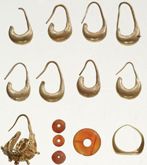
Photo by IAA
Ready to start your treasure hunt? In 2010, archaeologists unearthed a ceramic jug in Megiddo filled with dirt and sent it in for analysis and cleaning. Only a few months ago was the dirt finally washed out of it. To their amazement, inside was a treasure trove of silver and gold jewelry, some “without parallel.” This is what good Bible study is like—unearthing hidden treasure. What do you want, just the jug or a treasure trove?“I rejoice at Your word as one who finds great treasure” (Ps. 119:162). Once you get a taste of what the Holy Spirit can help you uncover, you’ll never go back to casual reading again.
Benner, Jeff A. “Ancient Hebrew Word Meanings: Law-torah.” Ancient Hebrew
Research Center. http://www.ancient-hebrew.org/27_law.html
“Hebrews 4:12.” http://preceptaustin.org/hebrews_412.htm#4:12
Pawson, J. David. Unlocking the Bible. London: HarperCollins Publishing, 2007.
The Virtual Bible Museum: Experience the Bible. “The History of the Bible: Part II:
Hebrew Scriptures.”
http://www.biblemuseum.net/virtual/history/ancient2.htm
Wikipedia. “Sefer Torah.” http://en.wikipedia.org/wiki/Sefer_Torah
All logos and trademarks in this site are property of their respective owner. All other materials are property of Bridges for Peace. Copyright © 2024.
Website Site Design by J-Town Internet Services Ltd. - Based in Jerusalem and Serving the World.